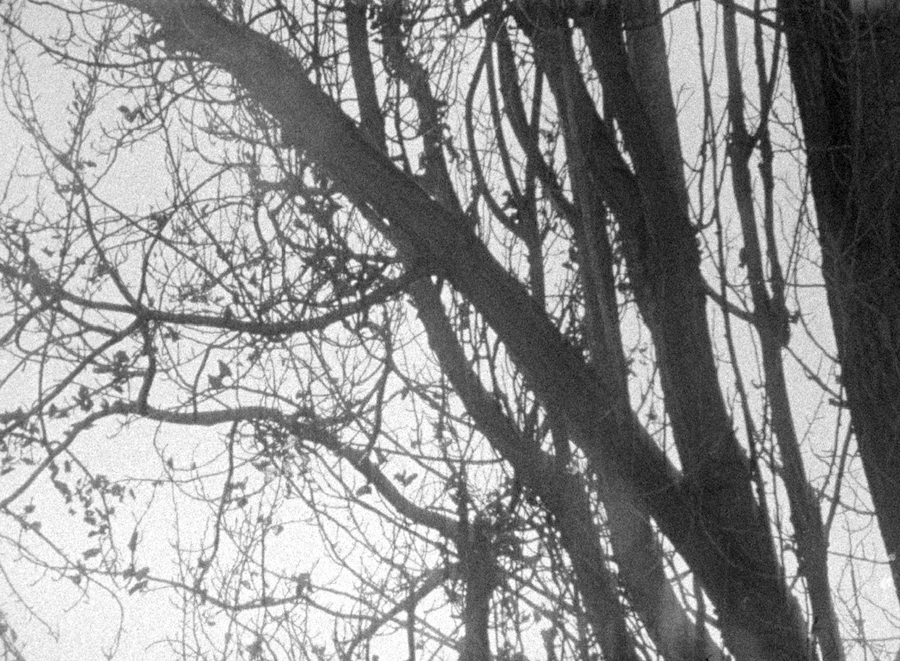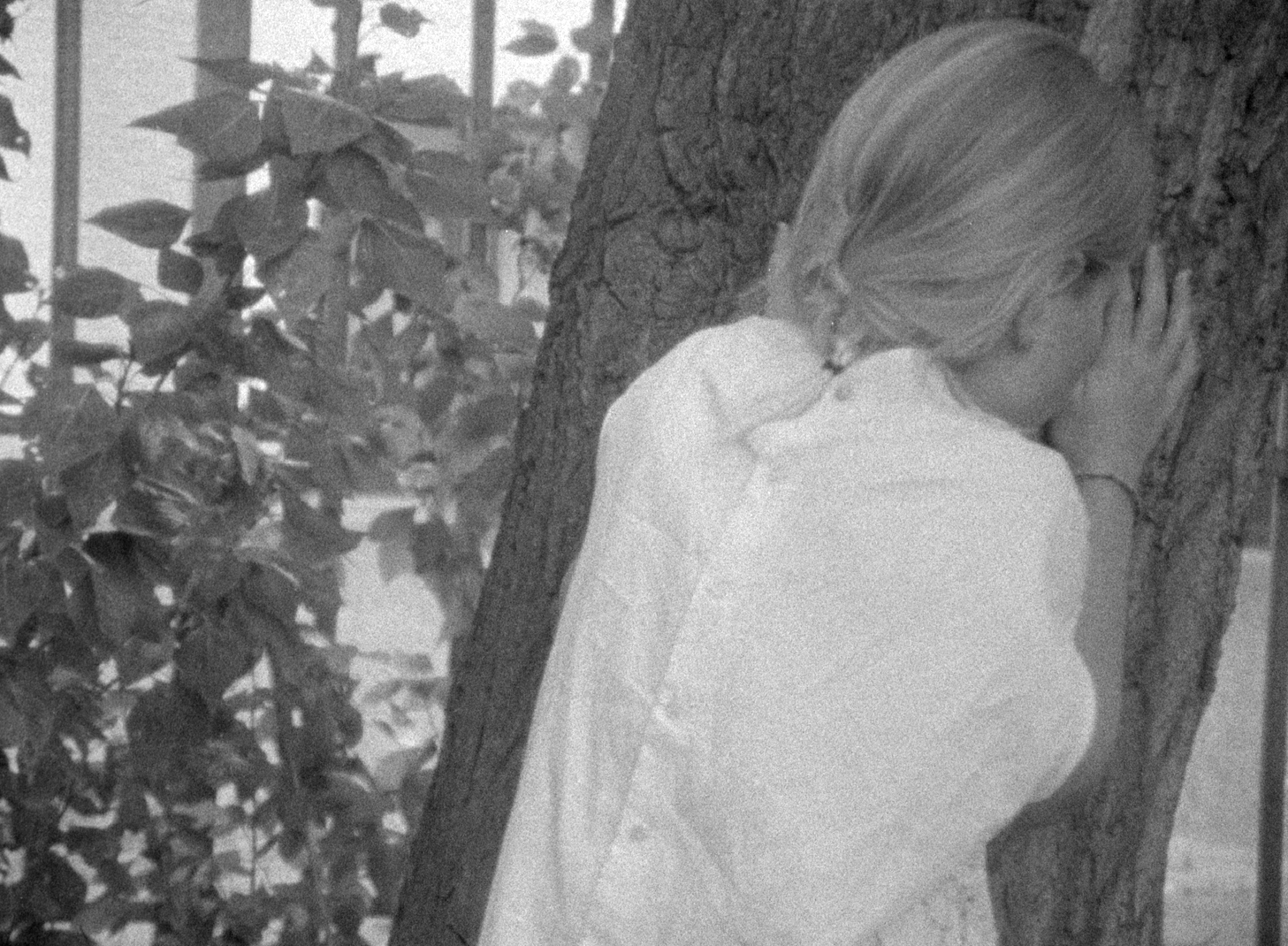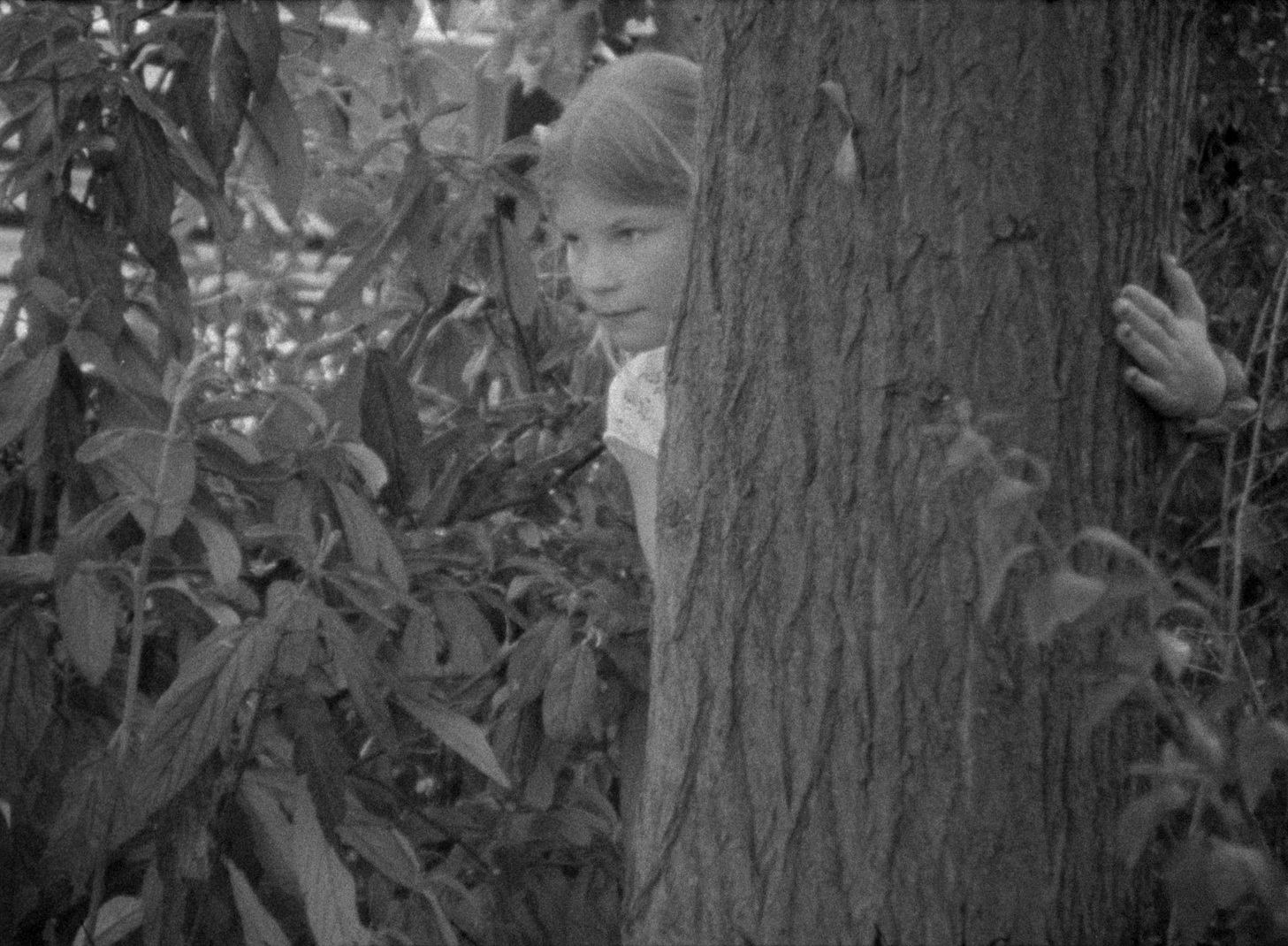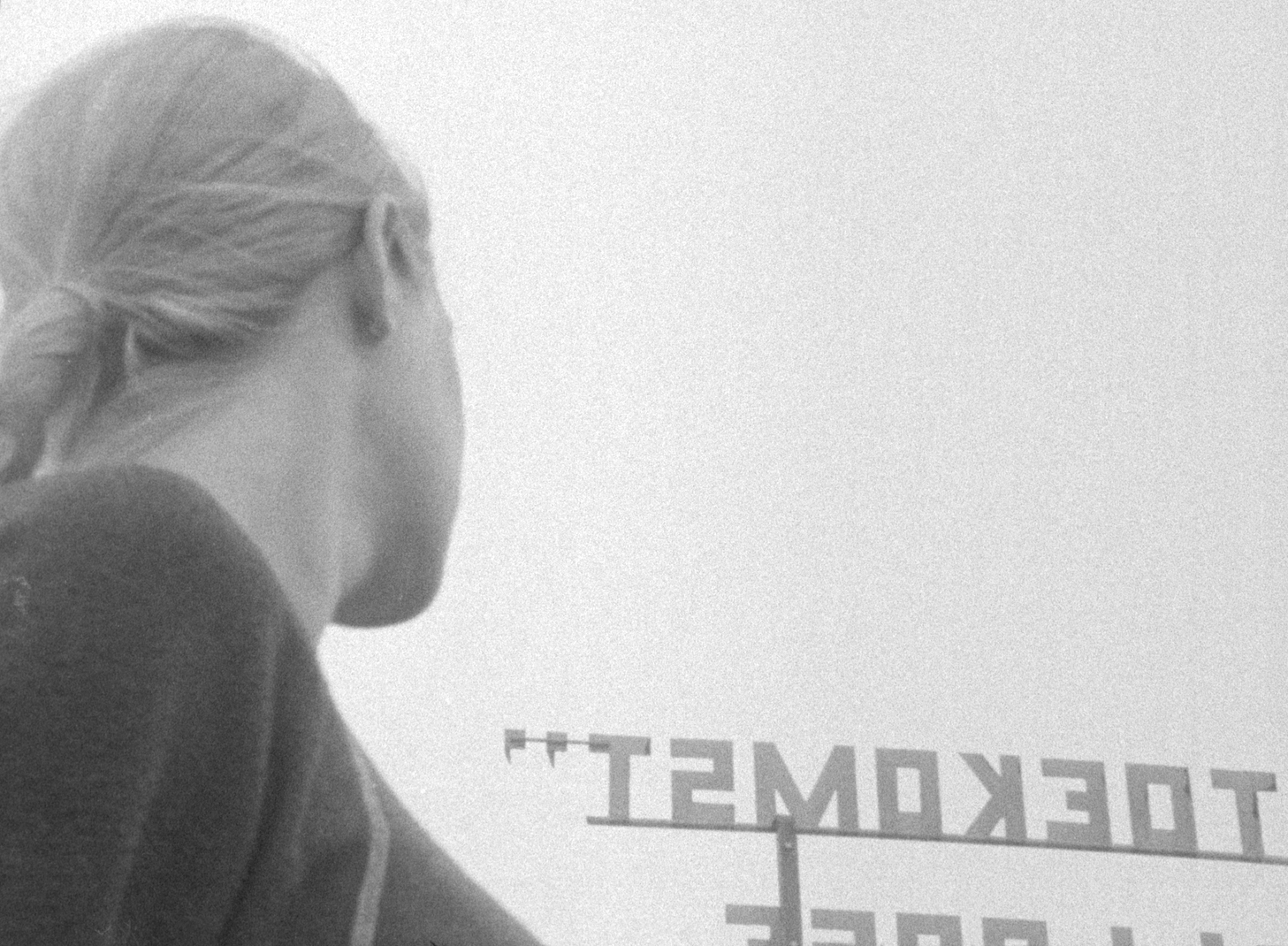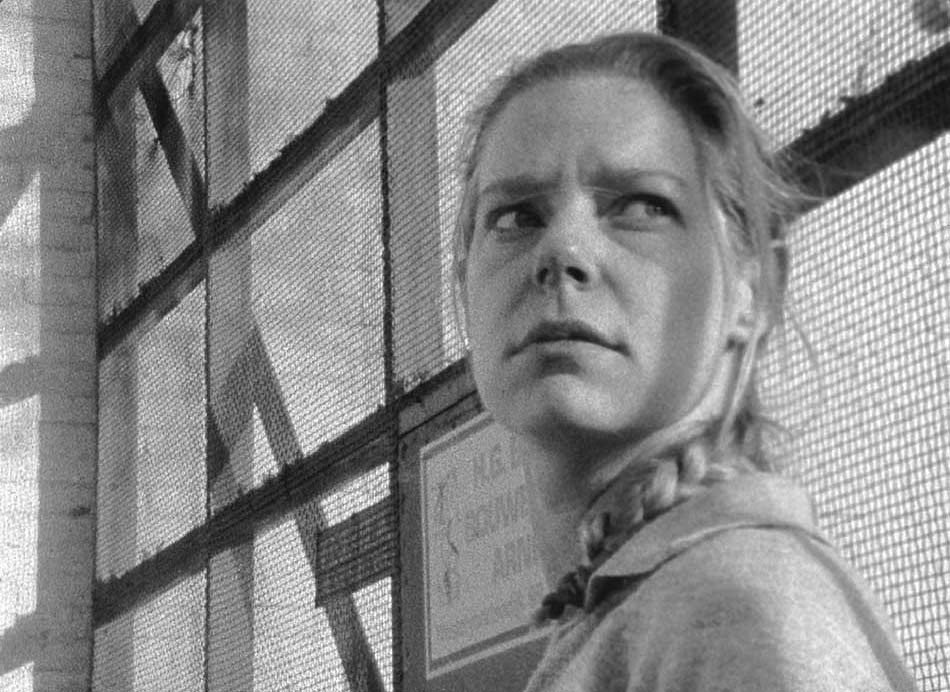Gerdinand & Corline, 16mm to SD, black and white, sound, 5 min, 05 sec
A blind woman follows a deaf couple having an argument in sign language. The woman drags a stick along a fence producing a rattling noise, unheard by the deaf couple; she is blind and unable to see the couple, which is unaware of her presence. This in itself is a very bleak scene about the impossibility of human communication. All the characters in this short visual poem live in their own confined worlds and their means of expression are lost to everyone but themselves and the almighty viewer, who in this case is represented by a young girl. We as onlookers may feel a sense of shame or embarrassment for observing the intimate communications of the disabled couple and their blind follower, but the young girl comes to our aid in a similar fashion with which audiences from the early movies needed a character to blame while peeking through a keyhole, or a guide over who’s shoulder a landscape of a cityscape would be revealed. The young girl takes upon herself the role of the unabashedly curious, and while nowadays these sorts of deliberations may seem overly sensitive one might also argue that we have lost all sense of scruples. The young girl observing the scene (from another time or another dimension) offers us hope. Who is she? Is she a younger version of the blind woman of the coming flashback in which ‘the future’ passes over her head into a mirror image, thus hinting at the past, in which case this would mean that the girl is having a vision of herself as an older woman, or is the girl the daughter of the woman who, for the duration of the flashback, is obviously pregnant? In the final act the various interpretations become whole again when the young girl picks up the relay baton hinting at rejuvenation. This is not a narrative but a cyclical poem.

